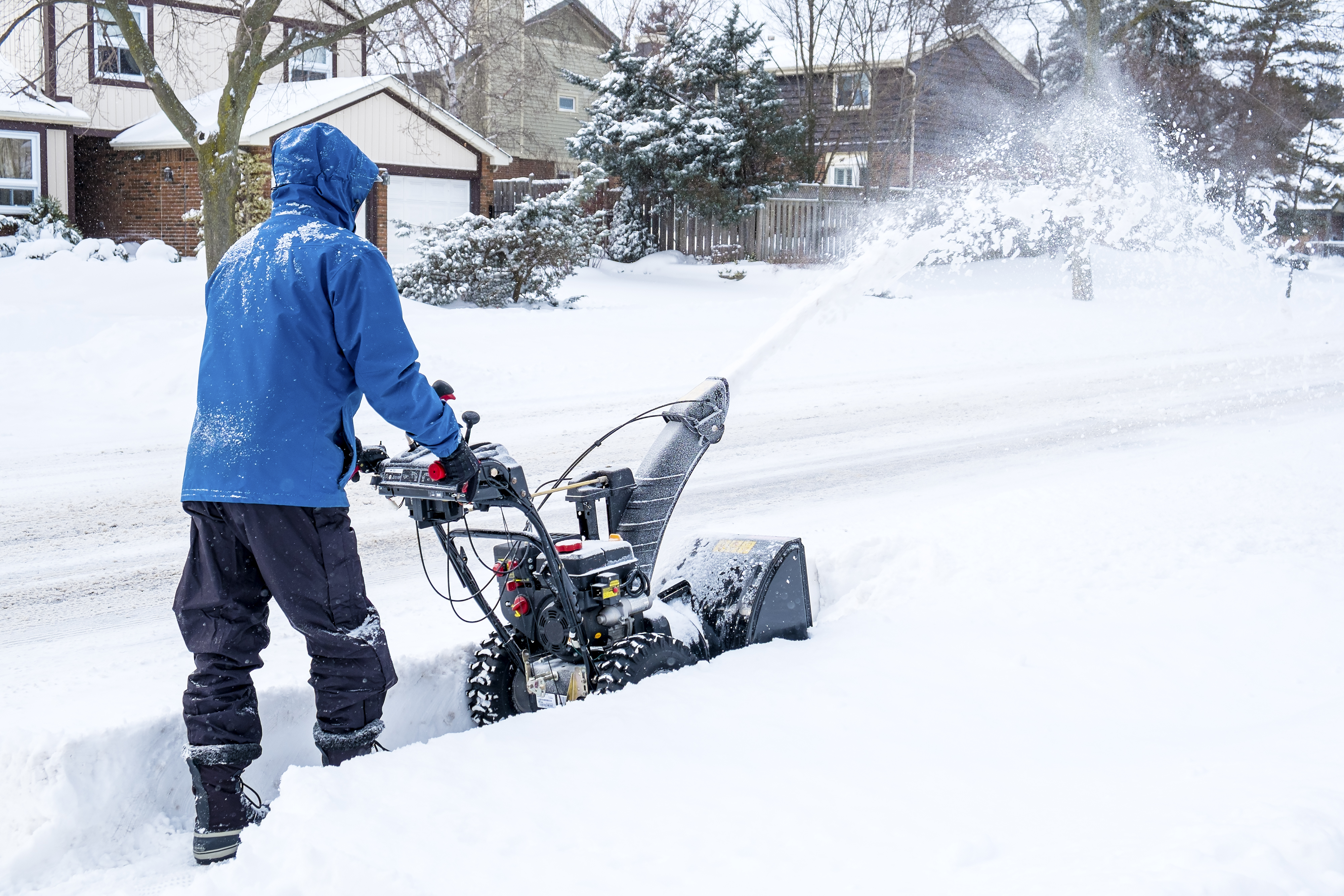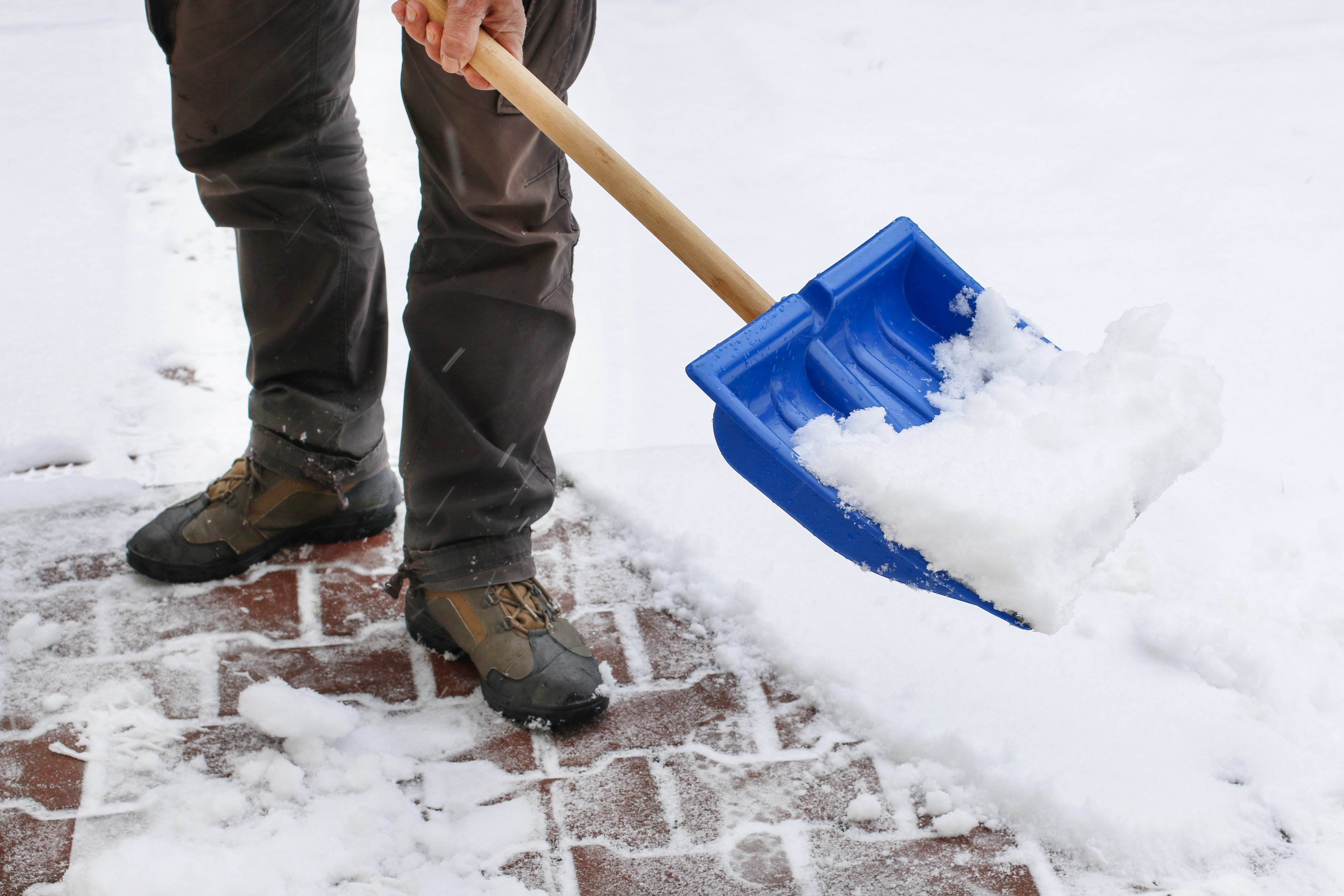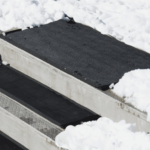After heavy snow, it is important to remove the snow from walkways, driveways, and stairs as soon as possible in order to avoid ice buildup and reduce slips and falls. Save yourself time, effort, money, and a few fingers by preparing early for winter storms. Proper planning prevents poor performance. Read on to avoid common snow removal mistakes.
Mistake #1: Cluttered Yard
Sometimes snow comes unexpectedly, but most often, there is a weather report that will warn of the impending arrival. Prepare for the snow by preparing your yard before it arrives. A mistake many make is not securing or stowing away yard accessories that will become camouflaged after the snow. Hoses, garden shovels/tools, outdoor decor, children’s’ toys will all cause chaos in a snow blower if you forget where they were before the snow. This mistake will damage the yard object and possibly your snow blower.
Mistake #2: Not Respecting the Snow Blower

snowblower is powered off?
A researcher at the University of Arkansas may have cracked the code. Dr. Bart Hammig’s recent study of more than 30,000 snow blower injuries found a source of hidden power that can lurk, even when an operator presence switch, or “Dead man’s switch,” has been invoked and the power to blades cut off. The problem often starts the same way: with a clogged machine. Wet snow can easily clog a snowblower and frustrate the user. Sticks don’t always work to dislodge the snow, and that is when thousands of people every year resort to the worst idea:
“They stick their hand down the chute and try to dislodge the snow. And that is when severe injuries occur,” he explained.
How can that happen, when power to the blades is off? Dr. Hammig’s research shows that inside all that clogged snow, rotational force is built up, enough to do damage even when the engine is cut completely off.
It’s something many users have never heard.
“And we know when that’s dislodged, it can actually rotate a quarter or a half a turn, which would probably be enough to do damage,” said Hammig.
Mistake #3: Overexertion
While snow shoveling is good exercise, it can also be dangerous for the optimistic shoveler who takes on more than he/she should. Shoveling snow is extremely strenuous, especially for those individuals who do not engage in regular cardiovascular activity. According to the Cleveland Clinic, approximately 11,000 people seek shoveling-related hospital treatment each year for injuries (93%) or cardiac issues (7%). Here are some tips from the National Safety Council for safe snow shoveling:
- Individuals over the age of 40 and/or those who are relatively inactive should be especially careful.
- Avoid shoveling after eating or while smoking.
- If you have a history of heart trouble, do not shovel without a doctor’s permission.
- Shovel only fresh snow. Freshly fallen, powdery snow is easier to shovel than the wet, packed-down old snow.
- Push the snow as you shovel. It’s easier on your back than lifting the snow out of the way.
- Don’t pick up too much at once. Use a small shovel, or fill only one-fourth or one-half of a large one.
- Slow Down! Shoveling (like lifting weights) can raise your heart rate and blood pressure dramatically, so pace yourself. Stretch out and warm up to prepare your body before taking on the task.
- Use proper technique. Lift with your legs bent, not your back. Keep your back straight. By bending and “sitting” into the movement, you’ll keep your spine upright and less stressed. The strongest muscles in your body (your shoulders, torso, and thighs) can do the work for you.
- Do not work to the point of exhaustion. If you run out of breath, take a break. If you feel tightness in your chest, stop immediately.
Ground-Thawing and Snow-Melting Mats
Powerblanket®, the leader in total temperature control solutions, offers ground-thawing, snow-melting mats that use radiant heat to clear your path of ice and snow. These mats are heavy-duty snow-melting safety mats designed to melt snow and ice to prevent accumulation on stairs and walkways. They melt snow and ice on contact and create a safe walkway in even the coldest winter conditions. Ground-thawing and snow-melting mats help prevent accidents due to slipping and falling that could cause delays, decreased productivity, or increased costs in areas with heavy foot traffic: universities, hospitals, industrial sites, etc. Designed to be outside throughout the winter, these mats stop the accumulation of additional snow and ice, reducing time and labor-intensive snow removal and eliminating the use of any harsh melting agents. Customize your snow melting system with connectable mats to cover any space.
- Keep stairs, doorways, walkways, and ramps free from snow and ice
- Will melt approximately 2 inches of snow per hour when operating
- Protect personnel from winter weather conditions
- Prevent slips and falls that could lead to costly lawsuits
- More effective for snow and ice melting than harsh chemicals (less damaging to the environment, reusable, won’t damage concrete or other flooring surfaces)
- More convenient than shoveling snow
- 33.3 Watts/Sq ft
- The ONLY snow melting mat product that is made in the USA
Sources
“Snow Shoveling—A Real Risk for Heart Attack”. Cleveland Clinic. 6 January 2017. https://health.clevelandclinic.org/2015/02/snow-shoveling-a-real-risk-for-heart-attack/
“Snow Shoveling”. National Safety Council. 6 January 2017. www.nsc.org/NSCDocuments_Corporate/SafetyObservancesDocuments/Snow-Shoveling.pdf
Thousands Injured by Powered-Down Snow Blowers | NBC Chicago http://www.nbcchicago.com/news/business/target-5-snowblower-injury-138621664.html#ixzz4XdprT3GP
Frequently Asked Questions
What should you not do when clearing snow?
Avoid using open flames or electric heating devices like hair dryers to remove snow or ice, as they can be hazardous and ineffective compared to safer methods like using heated mats or proper shoveling techniques.
How do people charge for snow plowing?
Snow plowing is often charged per inch of snow, allowing for a straightforward pricing model based on the total accumulation on the ground.
What not to do after shoveling snow?
After shoveling snow, refrain from eating a heavy meal or consuming alcohol, as these can strain your heart, especially if you've exerted yourself.
What is the snow plow etiquette?
When driving near snowplows, maintain a safe distance of at least 200 feet to reduce the risk of accidents and never attempt to pass a snowplow on the right.
Keep your steps, doorways and walkways safe this winter with our ground-thawing and snow-melting blankets.





